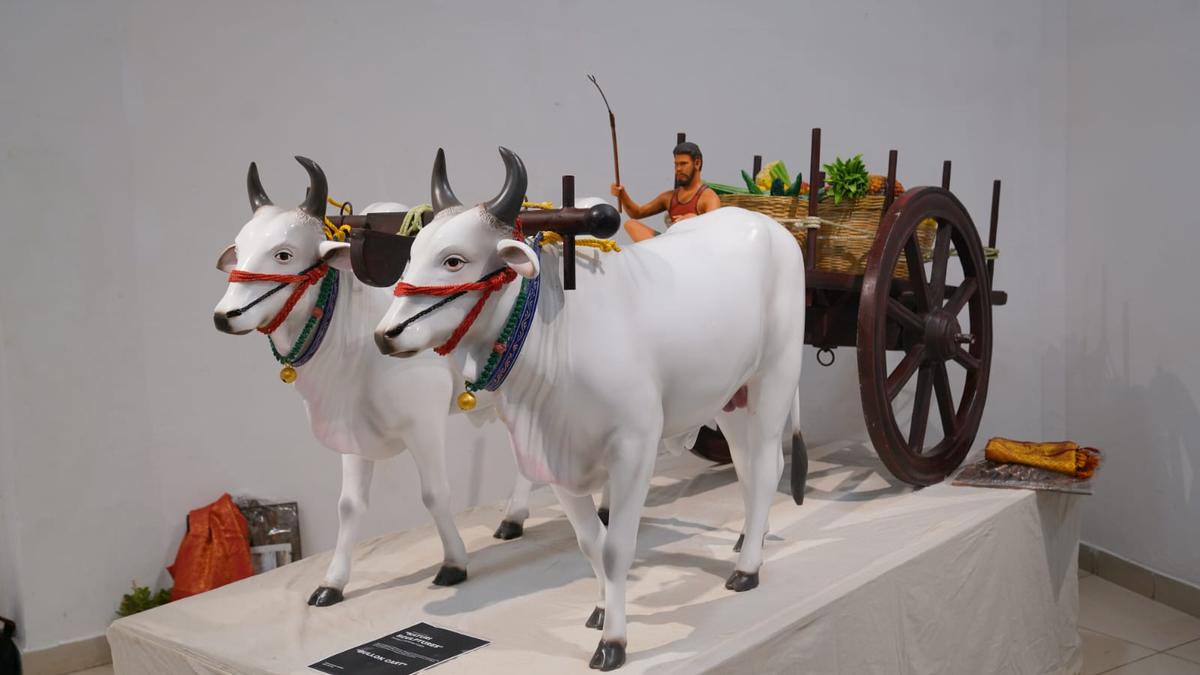
Art meets technology: Sree Harsha Katuri’s 3D printed sculptures in Hyderabad
The Hindu
Sree Harsha integrates traditional artistic expression with 3D printing technologies to create larger-than-life sculptures. His works are on display at State Art Gallery in Hyderabad
A farmer riding a bullock cart with sacks of paddy greets visitors at the entrance of the State Art Gallery in Hyderabad. This life-size, six-foot bull and 12-foot bullock cart waste-to-art sculpture is one of the 18 exhibits put up by artist Sree Harsha Katuri for his first solo show. The artist from Tenali in Andhra Pradesh beams as he explains, “I want to show the culture of my place and the significance of the farmer and the natural world in our lives.”
Weighing around two tons (four tons of scrap was collected), the piece, made of parts from automobile wheels, gearbox and cycle chains, is a marvel as it is arc welded from inside.
While a pair of six-feet-tall Ongolu Gitta (Ongole bulls) tethered to a rock is placed at a corner, the dynamic figures of a tiger chasing a Cape buffalo (an African sub-species of buffalo), dinosaur, rhinoceros, elephant and hippopotamus are other exhibits that vie for attention. Made of fibre, these one-and-half-foot-tall animals exude an antique look.
Sree Harsha integrates traditional artistic expression with 3D printing technologies to create larger-than-life sculptures. Inspired by his self-taught sculptor father, Katuri Venkateshwar Rao, Sree Harsha was determined to make a career in art since childhood. He went on to graduate in visual arts from Karnataka Chitrakala Parishad, keen on exploring the field of digital sculpting. “Traditionally, around five to 10 tools are available for a sculptor wanting to sculpt an object in clay or cement but in 3D modelling and sculpting, the options are endless. Now, when complex parts of the automobile industry are being 3D printed, then why not sculpture?” he asks.
He explored animation and researched 3D modelling and 3D printing machines for two years. “I used to be so hooked to those machines that I would even eat in my room. My parents worried whether something had happened to me,” he recalls.
3D modelling and sculpting is the first stage where a physical object is designed using 3D modelling software. “Programs such as Autodesk Maya, Blender, or ZBrush are commonly used for creating complex designs. These tools allow designers to create detailed models or sculptures digitally in three dimensions (width, depth, and height),” he explains.
Plastics, resin, and metals are some of the materials used depending on the type of the 3D printer.”












